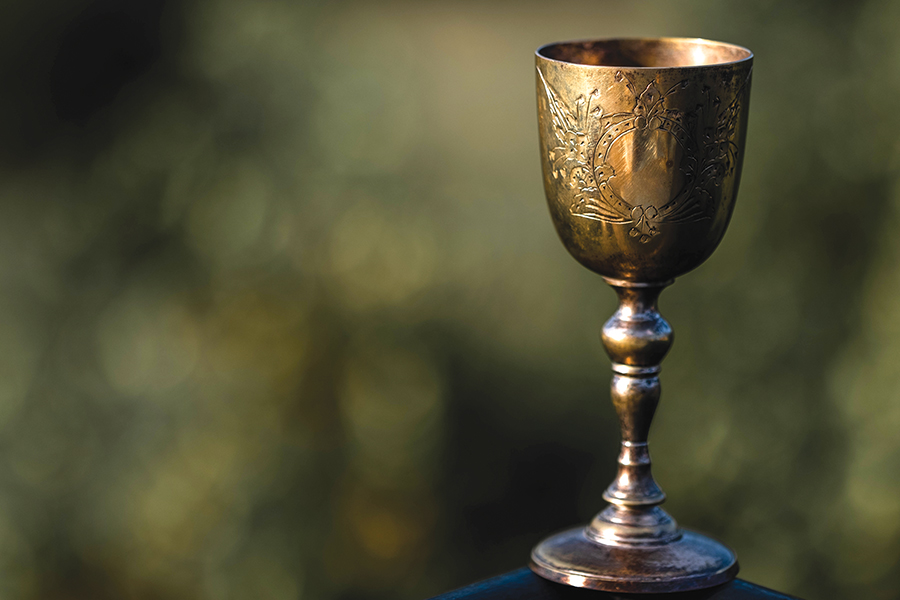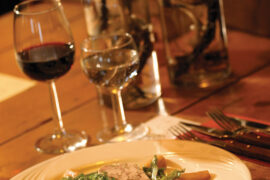By Matthew DeBord
HQ 117 | SPRING 2022
I’ve never been an advocate of drinking expensive, hard-to-find wines. For much of the wine-loving world, we’re talking about an everyday beverage that’s intended to be enjoyed with meals, not something you obsessively hunt down and then go into debt to purchase.
However, if you spend enough time learning about wine and drinking a wide variety of bottlings, you’ll invariably acquire knowledge of obscure, high-end producers or wines whose history dates back centuries. These “grail wines” are bottlings that oenophiles lust after and want to experience before they head off to that great, big vineyard in the heavens.
I have my own list of grail wines, mainly based on several decades as a wine journalist. I was fortunate enough to either sample or acquire a few of these. And for the record, while they are pricy, they aren’t exactly difficult to track down. Even strictly “allocated” wines with cult followings can be obtained through internet sites and auction houses.
Here are my Top 10 Grail Wines:
Chateau Lafite Rothschild
You owe it to yourself to buy a bottle of Lafite, one of the so-called “first growth” wines of Bordeaux that were officially classified in the late 1800s. Perhaps the definite cabernet sauvignon-based bottling from the left bank of the Gironde River, Lafite is formidable and off-putting when young; but after a few decades it matures into a symphony of hypnotic aromas, flavors, textures and tones.
Chateau Cheval Blanc
A unique wine from Bordeaux in that it wasn’t included in the famous 1855 classification that established the hierarchy of the region’s producers but has always been avidly sought after by collectors and oenophiles. A “right bank” wine, it is made predominantly from merlot, unlike the left bank cabernet-based superstars of Bordeaux.
Cos d’Estournel
Heavy hitters such as Lafite and Cheval Blanc are quite expensive, but this so-called “super second” is perhaps Bordeaux’s biggest bargain. The second growths were a next notch down in the 1855 classification, and in the late 20th century French winemaking improved to such a degree that they became as good or better than the firsts in some vintages. Cos d’Estournel is always the first high-end wine I look for on wine lists.
Chateau d’Yquem
Often overlooked, this legendary dessert wine of Bordeaux is just as collectible and perhaps even more age-worthy than the region’s famous red wines. Quite drinkable when first released, the Sauternes is a blend of semillon and sauvignon blanc that can endure for more than a human lifetime. Buy at least one older bottle and ignore the price.
Opus One
A collaboration between Napa pioneer Robert Mondavi and the Baron Philippe de Rothschild of Chateau Mouton Rothschild in Bordeaux. The idea, starting in the late 1970s, was to conjoin the spectacular quality of Napa grapes with the style of great Bordeaux, creating a homage to both. The results have been consistently stunning ever since. There has literally never been a weak vintage.
Heitz Cellar Martha’s Vineyard Cabernet Sauvignon
An old-fashioned Napa Valley cabernet that’s been in production since the mid-1960s. It doesn’t taste like a wannabe red Bordeaux, and it doesn’t go for the wow factor of more modern Napa cabs. The idea here is to achieve balance and a glorious expression of the Martha’s Vineyard terroir, and to showcase the potential of California cabernet. The 1974 vintage is considered nearly perfect.
Robert Mondavi Reserve Cabernet Sauvignon
My particular grail wine for this historically important Napa cabernet is from the 1985 vintage. Why? It was the first great wine I ever tasted after graduating from college. Back then I had a track record of exclusively pursuing value wines (in other words, cheap plonk).
Bryant Family
In the world of tightly allocated “cult” cabernets from the Napa region of California, a wine called Screaming Eagle is the most coveted. But I think Bryant Family is better — Screaming Eagle has the power, but Bryant is suaver and more sophisticated, showing that the top-dog California cabs can offer a wide range of viticultural expression when at their very best.
Penfolds Grange
Australia’s most famous wine is also the best syrah (or “shiraz”) from Down Under that I’ve ever savored. Decades into its history, it remains well-known mainly to enthusiasts; so if you see an older vintage on a wine list, it’s almost certainly underpriced relative to its quality.
Pol Roger Sir Winston Churchill
Champagne is always good, but this special Pol bottling is only released in the best vintages and is designed to age. Winston Churchill, like many Brits of his generation, fancied older Champers; so if you want to go down that road, this is the place to start. Expect faded fruit flavors and even some funky aspects, to go along with a mouthful that is notably less crisp than what you might be used to from the Champagne region.





